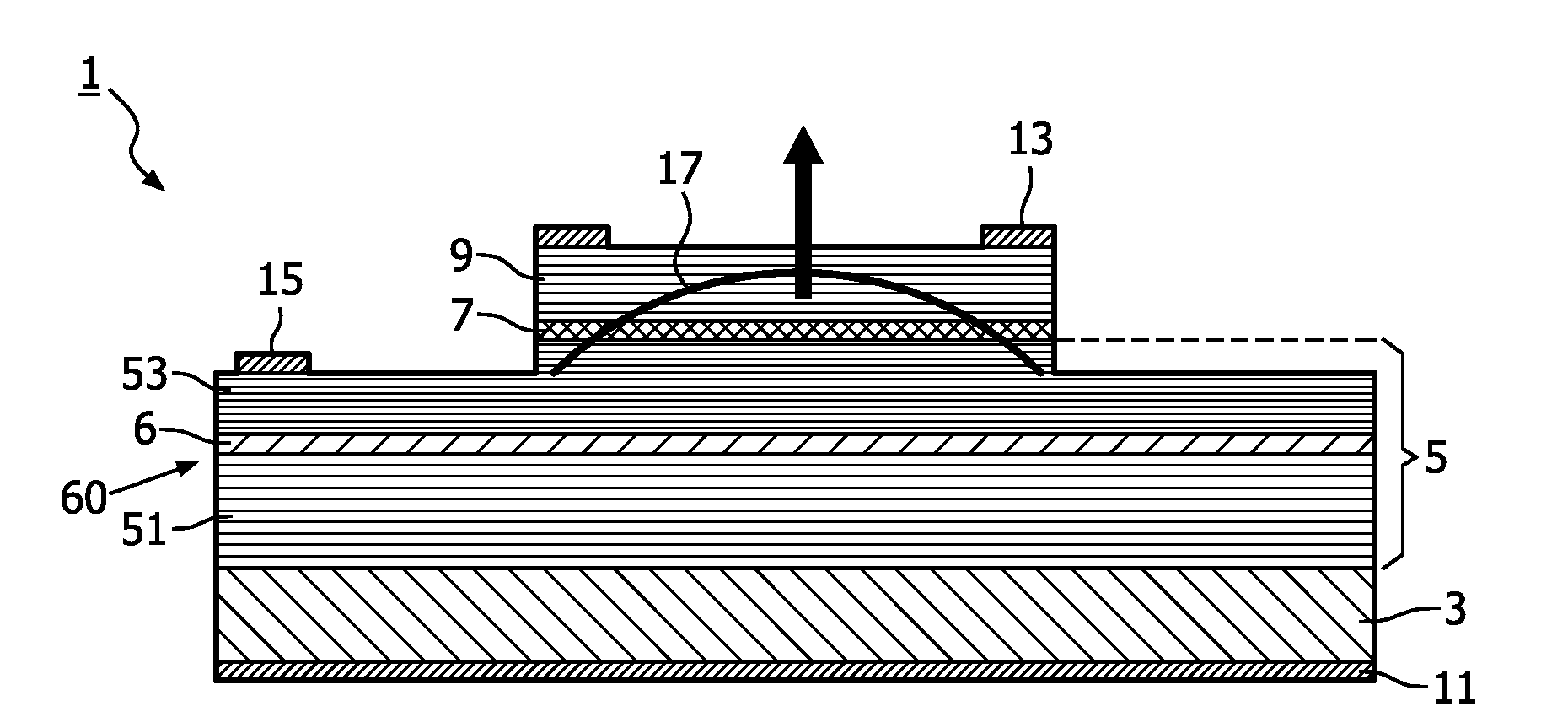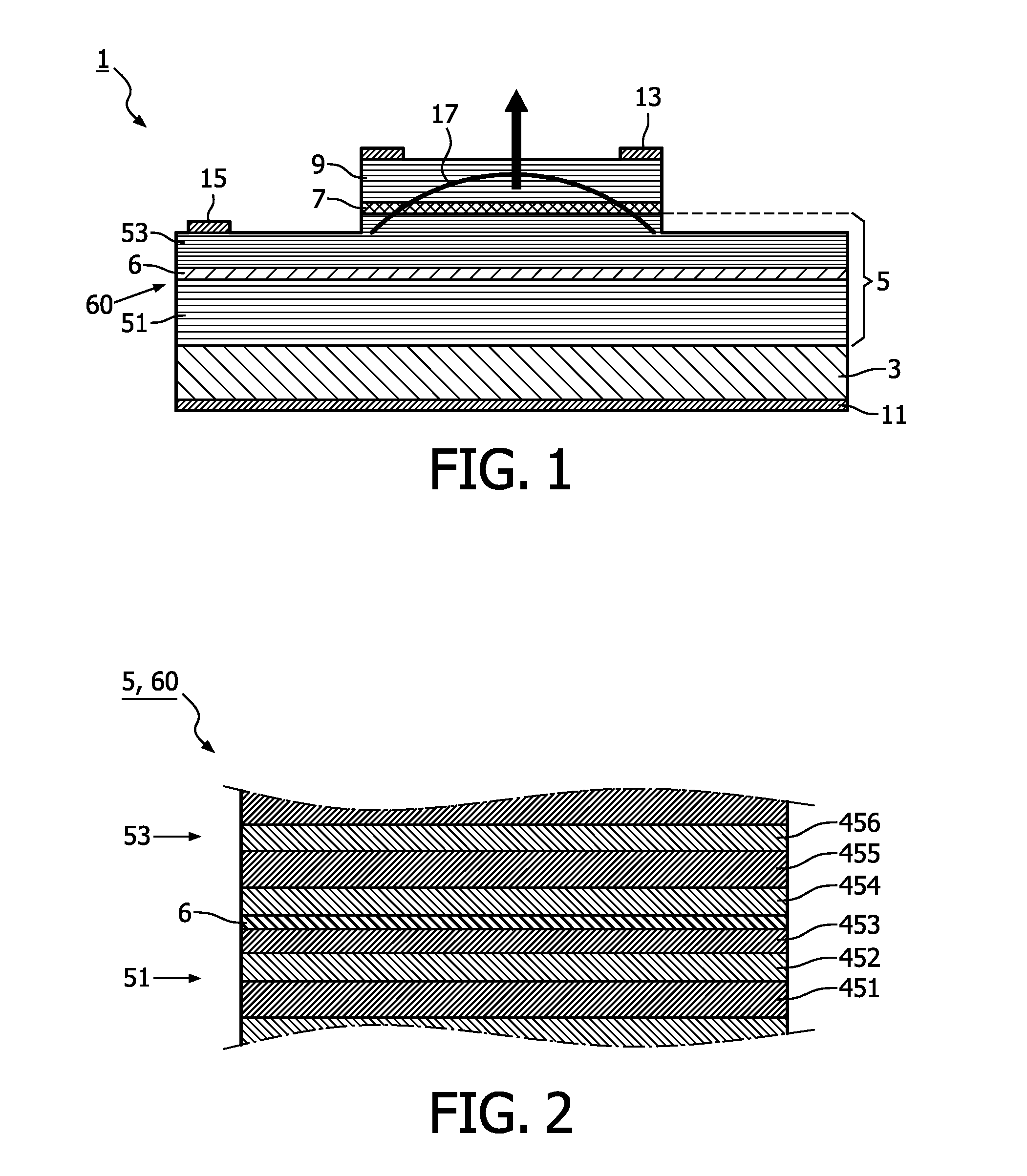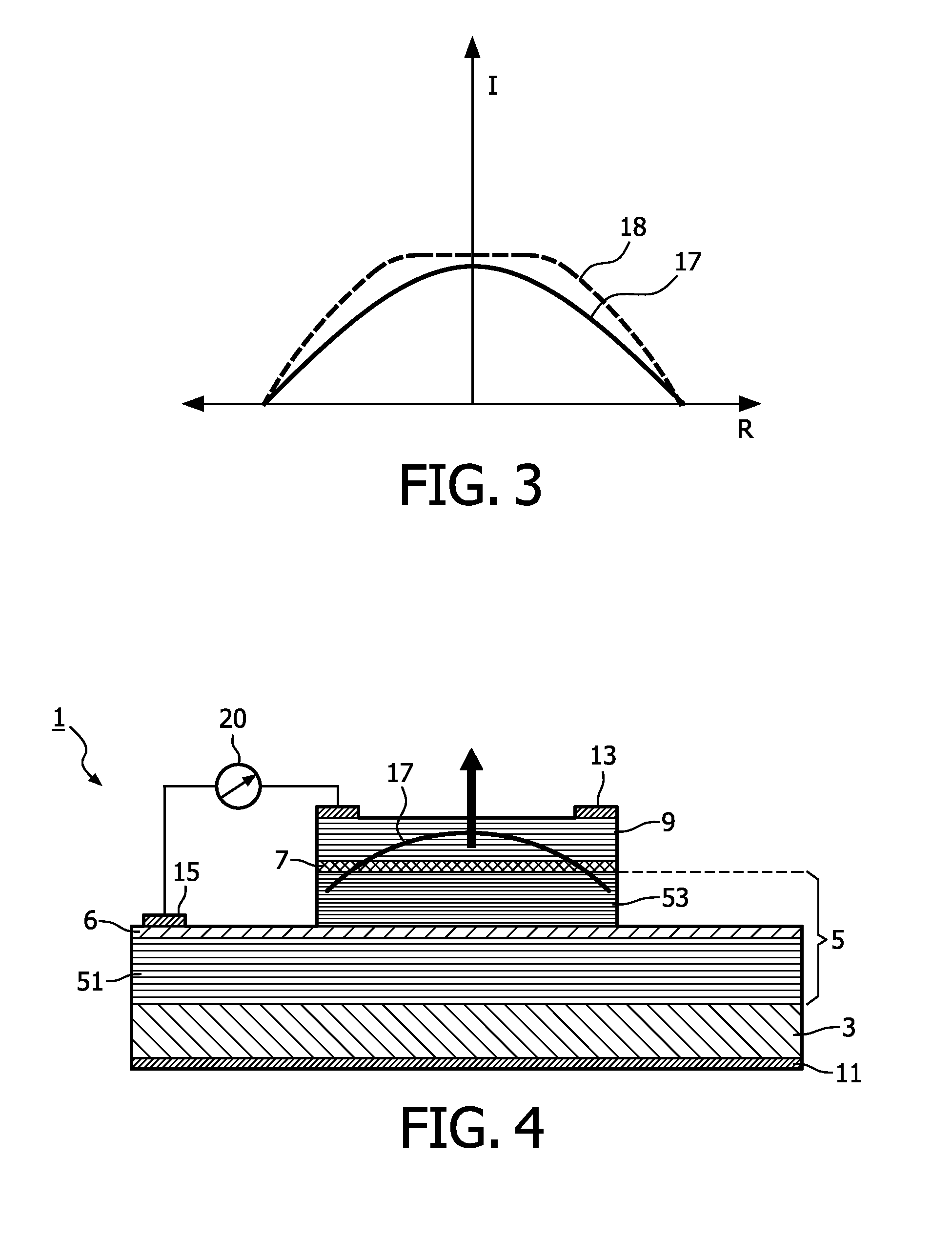Vertical cavity surface emitting laser with active carrier confinement
a laser and cavity surface technology, applied in semiconductor lasers, laser details, electrical devices, etc., can solve the problems that the carrier injection of both approaches (oxidation and implantation) is not necessarily adapted to the lateral intensity profile of the optical mode, and achieves improved beam quality, enhanced beam intensity, and improved efficiency
- Summary
- Abstract
- Description
- Claims
- Application Information
AI Technical Summary
Benefits of technology
Problems solved by technology
Method used
Image
Examples
Embodiment Construction
[0033]FIG. 1 shows a schematic of a VCSEL device 1 with an integrated NPN-phototransistor for adaptive carrier confinement. The VCSEL device 1 comprises a substrate 3, and thereon a first layer stack of semiconducting layers which forms a first distributed Bragg reflector 5, an active region 7 with one or more quantum well layers, and a second layer stack of semiconducting layers forming a second distributed Bragg reflector 9.
[0034]A suitable and frequently used material for the substrate is gallium arsenide, GaAs. However, other materials such as indium phosphide (InP) or GaInAsN can be used as well.
[0035]If GaAs is used as the substrate material, the distributed Bragg reflectors 5, 9 can be fabricated by alternating epitaxial growing GaAs and AlGaAs layers. If the substrate is negatively doped, the lower or first distributed Bragg reflector 5 is negatively doped as well, whereas the upper or second distributed Bragg reflector is positively doped. The second distributed Bragg refle...
PUM
 Login to View More
Login to View More Abstract
Description
Claims
Application Information
 Login to View More
Login to View More - R&D
- Intellectual Property
- Life Sciences
- Materials
- Tech Scout
- Unparalleled Data Quality
- Higher Quality Content
- 60% Fewer Hallucinations
Browse by: Latest US Patents, China's latest patents, Technical Efficacy Thesaurus, Application Domain, Technology Topic, Popular Technical Reports.
© 2025 PatSnap. All rights reserved.Legal|Privacy policy|Modern Slavery Act Transparency Statement|Sitemap|About US| Contact US: help@patsnap.com



